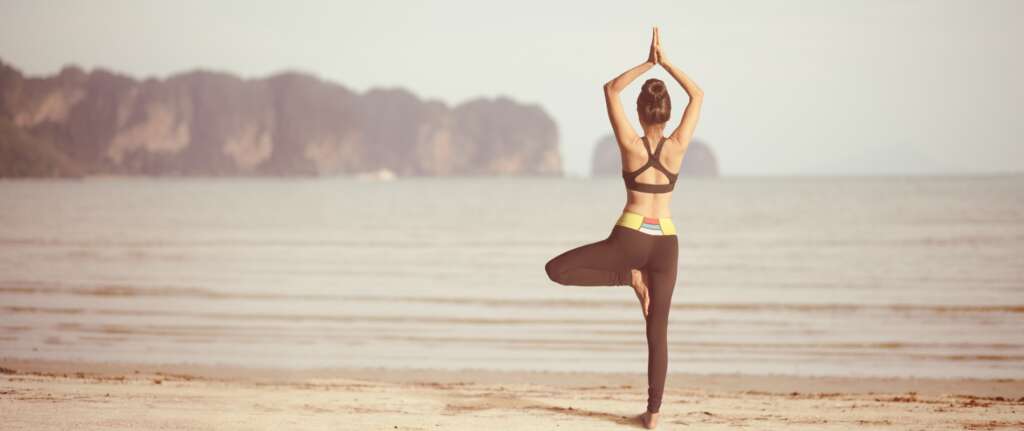Are you feeling overwhelmed, anxious, or down? No need to worry, you are not alone. Many people struggle with anxiety and depression, especially in today’s fast-paced world. One gentle yet powerful way to find some relief is through yoga. This blog aims to guide you through different yoga practices that can help soothe your mind and ease your worries.
Yoga is more than just physical exercise; it’s a holistic practice that combines physical postures, breath control, and meditation to enhance your overall well-being. It can be a valuable tool in managing mental health issues, offering a natural and accessible way to help control anxiety and depression.
The Link Between Yoga and Mental Health
Yoga does more than just stretch your body. It reaches deep into your mind, helping to clear away the clutter and quiet the constant buzz of thoughts that might be fueling your anxiety or sadness. According to research by Science Direct, Practicing yoga for mental health can significantly decrease the stress hormone cortisol, thus easing feelings of anxiety and depression.
But how exactly does yoga achieve this? When you practice yoga, you focus on your breath and movements, which helps to calm the mind and reduce stress. This mindfulness, or the state of being fully present in the moment, is a key component of yoga that has been linked to improved mental health. As you become more mindful, you may notice less anxiety and a more stable mood.
Moreover, yoga encourages the production of endorphins, the body’s natural painkillers and mood elevators. These biochemical changes in the brain promote feelings of happiness and relaxation. To understand more about how yoga can benefit your mental health, watch this video.
So, by integrating yoga for anxiety into your routine, you are not just working on your physical fitness but also nurturing your mental and emotional health.
Types of Yoga for Anxiety and Depression
1. Hatha Yoga:
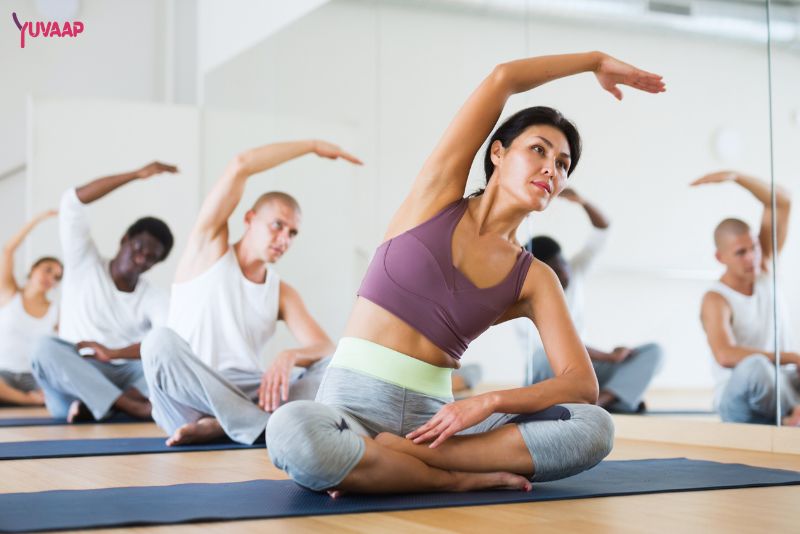
Hatha Yoga is a gentle form of yoga that is excellent for beginners. It focuses on slow and controlled movements, which can help you feel grounded and calm. This type of yoga is particularly good for easing stress because it involves deep breathing and mindfulness, which are essential for calming the mind. It allows you to focus on the present, pushing away intrusive thoughts that can lead to anxiety and depression.
2. Vinyasa Yoga:
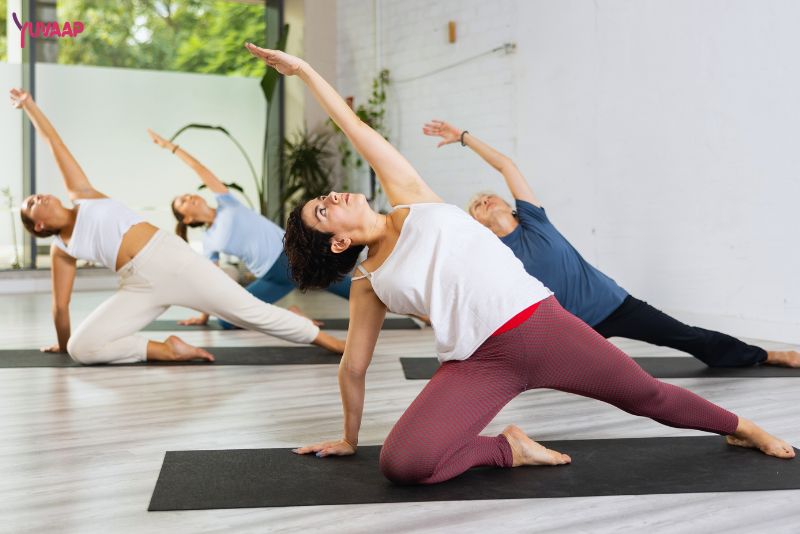
Vinyasa Yoga is more dynamic. It involves a series of poses that flow smoothly into one another, synchronized with the breath. This can be very therapeutic for people suffering from depression because the continuous movement helps distract from negative thoughts and boosts levels of serotonin, a key hormone that elevates mood.
3. Restorative Yoga:

Restorative Yoga is all about relaxation. In this form of yoga, you spend long periods lying on blocks, blankets, and yoga bolsters in passive poses. This deep relaxation can trigger the parasympathetic nervous system, responsible for rest and digestion activities, which is often out of balance in those with anxiety and depression. It’s a perfect choice if you’re looking to calm both the body and the mind deeply.
For more detailed guidance on specific asanas that can aid in relieving symptoms of anxiety and depression, explore this comprehensive blog post
4. Yin Yoga:
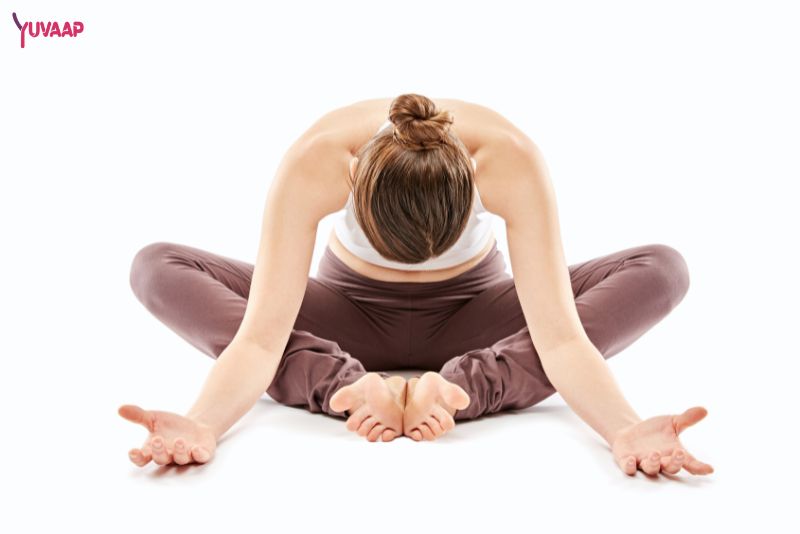
Yin Yoga involves variations where poses are held for longer periods, typically five minutes or more. This type of yoga targets the deep connective tissues and helps to regulate the body’s flow of energy. Yin Yoga can greatly enhance your ability to cope with stress and emotions, making it a powerful practice for those struggling with anxiety and chronic stress.
5. Kundalini Yoga:
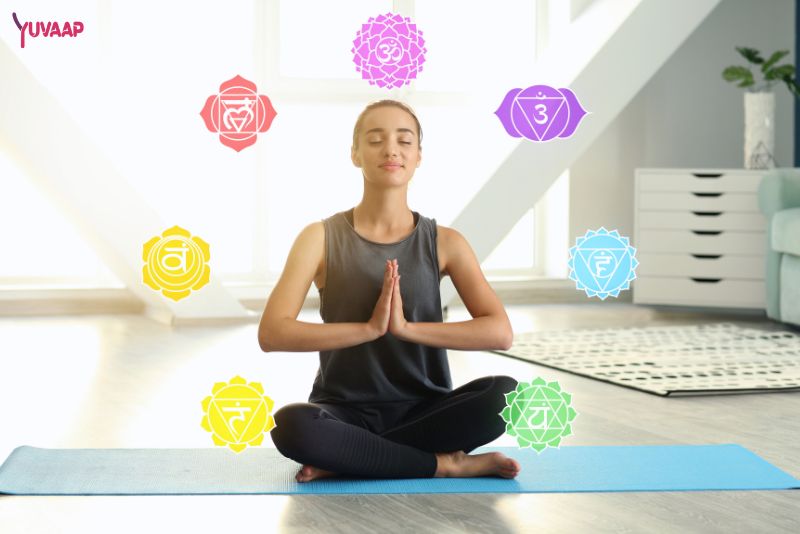
Kundalini Yoga is unique because it incorporates movement, dynamic breathing techniques, meditation, and the chanting of mantras, such as “Sat Nam,” meaning “truth is my identity.” This can help bring about a profound awakening of your mental and physical awareness. For those dealing with depression or anxiety, Kundalini Yoga can help manage symptoms by releasing pent-up energy and enhancing one’s sense of well-being.
These various styles of yoga offer unique benefits, and trying one or more of them could help you find what best helps your anxiety and depression. Remember, the key is to start slowly and listen to your body. Yoga is not a competition; it’s a personal journey toward mental, physical, and emotional balance.
Practical Tips for Incorporating Yoga into Daily Life
Incorporating yoga for mental health into your daily routine can seem challenging, especially when you’re dealing with anxiety or depression. However, setting up a regular yoga practice can significantly improve your overall well-being. Here are some practical tips to help you get started:
- Start Small: Begin with just a few minutes each day, perhaps with simple poses like Child’s Pose or Cat-Cow. These poses are easy to do and can be very calming. Gradually, as you get more comfortable, you can extend your practice time.
- Create a Comfortable Space: Designate a quiet, comfortable spot in your home for yoga. It doesn’t have to be large—just a peaceful corner where you won’t be disturbed. Having a dedicated space can motivate you to practice regularly.
- Make It a Routine: Try to do yoga at the same time each day. This consistency makes yoga a natural part of your daily routine, just like eating or sleeping. Morning might be ideal as it starts your day with a sense of calm, but choose a time that works best for you.
- Use Online Resources: There are many free yoga videos available online that are specifically designed for anxiety and depression. These resources are great for beginners and can be accessed anytime, making it easier to stick to your yoga practice.
- Be Patient and Kind to Yourself: Remember, it’s okay to have days when you don’t feel up to practicing. Be gentle with yourself and recognize that every small step you take is part of your journey towards better mental health.
- Finding the Right Yoga Class and Instructor: Finding the right yoga class and instructor is crucial, especially when you are using yoga as a tool to manage anxiety and depression. Here’s how you can make sure you find the best fit for your needs:
- Consider Accessibility: Choose a yoga class that is easy to get to. If traveling is stressful, consider online classes that you can do from the comfort of your own home.
Additional Holistic Wellness Approaches
In addition to yoga, several other aspects of holistic wellness can play significant roles in managing anxiety and depression. Integrating these practices with your yoga routine can provide a more comprehensive approach to improving your mental health.
- Meditation: Meditation is a powerful companion to yoga for anxiety and yoga for mental health according to NIH. It involves sitting quietly and paying attention to your thoughts, breathing, or sensations without judgment. Regular meditation can help reduce stress, increase your emotional health, and enhance self-awareness. Even a few minutes daily can make a big difference in your overall mental clarity and stability.
- Physical Exercise: Regular physical activity such as gym, walking, running, or cycling, releases endorphins, which are chemicals in the brain that act as natural painkillers and mood lifters. Exercise also helps regulate your sleep patterns, which can significantly improve feelings of anxiety and depression.
- Diet and Nutrition: What you eat can directly affect your brain’s neurotransmitter pathways that control your mood and thought processes. Consuming a balanced diet rich in vegetables, fruits, and unprocessed grains can provide the necessary nutrients to boost your mood and energy levels.
- Consistent Sleep Patterns: Sleep and mental health are closely connected. Lack of sleep can aggravate anxiety and depressive symptoms, so it’s important to prioritize good sleep hygiene. Practices like going to bed at the same time each night, ensuring a dark and quiet sleeping environment, and avoiding screens before bed can enhance sleep quality.
- Sustaining Motivation and Mental Wellness: Maintaining a routine of yoga and holistic practices can sometimes be challenging, especially during periods of low mood or high anxiety. Here are some tips to help sustain your motivation and commitment to your mental wellness journey:
- Set Small, Achievable Goals: Instead of aiming for large, difficult objectives, set small goals that are easier to achieve. This could be as simple as doing ten minutes of meditation or yoga each day or taking a short walk. Small successes can build your confidence and encourage you to stick with your routine.
- Keep a Journal: Recording your feelings and the activities you do each day can help you understand what improves your mood or triggers your anxiety. A journal can also be a motivational tool, showing you the progress you’ve made over time.
- Seek Social Support: Connecting with friends, family, or support groups who understand what you’re going through can make a big difference. They can offer encouragement, share their experiences, and help you stay on track with your wellness goals.
- Be Patient and Flexible: Understand that progress might be slow, and that’s okay. Mental health is not a linear process; there will be good days and bad days. Adjust your activities according to how you feel, and remember that every small step forward is a victory.
Yoga offers a gentle yet effective way to manage anxiety and depression, connecting the mind, body, and spirit in a holistic practice that can bring significant relief. By exploring different styles of yoga and incorporating them into your daily routine, you can start to experience the calming benefits of this ancient practice said by NIH.
Remember, the journey of yoga is personal. What works for one person might not work for another, so it’s important to explore different options and find what helps you feel your best. Whether it’s through Hatha, Vinyasa, Restorative, Yin, or Kundalini yoga, there is a path that can help you manage your anxiety and depression.
We encourage you to reach out to professionals, join classes, and immerse yourself in the yoga community. The support and positive environment can make a significant difference in your mental health journey. Embrace the practice, be patient with yourself, and watch how yoga can transform your life.
FAQs
References
https://www.sciencedirect.com/science/article/abs/pii/S0306987712000321
https://www.ncbi.nlm.nih.gov/books/NBK38360/

Mr. Vijay Kumar Pandey is an eminent Yoga teacher with 15 years of experience. He excelled himself in Iyengar Yoga under the guidance of revered master BKS Iyengar Read More

